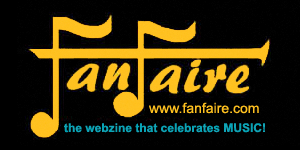I have always been of two minds about the trumpet. Ask me how I feel about the violin, and my response is swift and immediate. “I love it.” Apply the same query to the cello, the answer will be the same. The piano, even more. In fact, run through the entire complement of the symphony orchestra, and my response will be unequivocally and eternally, “I love them all.” Even the comical bassoon and the absolutely laughable tuba arouse nothing but affection in my heart. And although I would not like this generally publicized, I have even been known to jump up and down over Larry Adler’s rendition of the “Hungarian Rhapsody” played on the harmonica.
But something happens, or, indeed, doesn’t happen, when I hear a trumpet. Or should I say trumpets, since the instrument is often played in multiples. There is something about that hard shrill sound that grates on my ears, scarring the surface of my musical soul.
You may well ask why. I have asked myself the same question- often. Why the trumpet? It is innocent enough in appearance. Some might even find it attractive. Shiny, silvery steely, with a sound to match. But steely is not really the sound it makes. It is a brass instrument after all. Yes, brassy, sassy and brazen would seem to say it all. It is an exhibitionistic little horn, a “show-off.”
“Look at me,” it blares. “Don’t you dare turn away.” And how could you? It is loud and shrill and loves center-stage. There is nothing shy or retiring about the trumpet. Its musical statements are direct and forthright, its sound unyielding.
And what troubles me most is the fact that I know that it is exactly what it should be. The trumpet is merely doing what it was born to do, what its inventor intended it to be. Pointing its finger, assaulting the senses, announcing its presence in no uncertain terms. And when I find myself closing my eyes and ears at the sight and sound of it and my heart at the mere idea of it, I remember that this is the instrument whose fiery blasts Verdi used to herald Radames’ victorious entrance into Rome in “Aida.” Could a violin do that? Or a cello?” Or my beloved oboe? The question is, of course, ridiculous, the answer all too obvious.
And moving to a slightly different level, what instrument could march down all the main streets in all the small towns in the country on the Fourth of July, stirring the blood of the people into a patriotic frenzy?
And who (I refer hereafter to “it” as “who”) could accompany all the high school football teams, and play in the high school marching bands, thus helping to define that particular teenage rite of passage?
And lest we forget, who else could sustain all the jazz combos in all the dark and murky clubs in all the dark and murky corners of the world?
Food for thought, all of it. And although I confess to being thrown into a state of musical confusion every time a renegade trumpet blasts into my brain, there is one area wherein I capitulate completely, willingly throwing in the towel, freely raising my hands above my head, gladly running up the white flag of surrender. I speak of the piercing, wailing trumpet solo that begins George Gershwin’s stunning “Rhapsody in Blue” and his loveable taxi cabs skittering along the boulevards, honking their “trumpet-horns” in “An American in Paris.” Try if you dare to imagine these works trumpet-less. It can’t be done. Only the trumpet can scream like that, rattle your nerves with simmering excitement, demand that you hang on to your seat belts for a gorgeously bumpy ride.
Gershwin knew exactly what he was doing when he picked the trumpet out of the musical lineup. He needed an instrument whose restless kinetic energy could send electric currents streaking through his music. An instrument that was audacious, self-promoting and loved the limelight. He needed the unabashedly brassy and brilliantly brazen trumpet.
______________________
[Editor’s note: Do you have a favorite musical instrument? Or one that you love to hate? Or perhaps, like Dorothy, one you’re schizophrenic about? If you feel like writing about it, DO, and SUBMIT!



